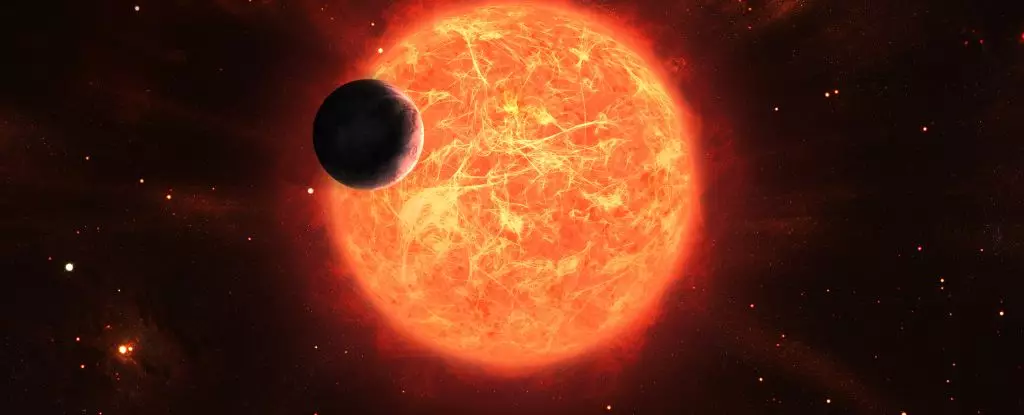The fascination with finding a second Earth is a pursuit that has captivated astronomers and scientists for decades. With the vast expanse of the Milky Way galaxy stretching before them, researchers are constantly on the lookout for exoplanets that could harbor life or resemble our home planet. A recent discovery has added a new dimension to this pursuit, but it’s not without its complications. The exoplanet in question, approximately 1.9 times the mass of Earth, orbits a white dwarf—a stellar remnant left over after a star like our Sun has exhausted its nuclear fuel.
This situation presents a mixed bag of insights; while the discovery offers a glimpse into the lifecycle of celestial bodies, it simultaneously raises questions about the viability of life in such extreme conditions.
To understand the significance of this discovery, one must grasp what a white dwarf is. After a star with a mass similar to that of our Sun undergoes its red giant phase—where it expands enormously and ejects its outer layers—it ultimately leaves behind a dense core. This core is the white dwarf, a stellar body no longer generating energy through fusion but rather surviving on residual heat. The process to arrive at this stage is characterized by an explosive end, and the system now observed provides potential implications for our own solar system.
In approximately 5 billion years, our Sun is predicted to enter its red giant phase, expanding outward to potentially engulf the inner planets, possibly including Earth itself. The newly discovered exoplanet serves as a speculative case study for what might happen to our own planet when faced with this monumental change.
The discovery of this intriguing exoplanet was made possible through an astronomical phenomenon known as gravitational microlensing. This effect occurs when a massive object, in this case, the white dwarf, causes the light from a more distant star to bend around it. As a result, this bending causes the distant star’s light to appear magnified. Scientists have reported that during a unique alignment, the white dwarf amplified the light of a background star by over a thousandfold, enabling researchers to detect even the presence of smaller celestial bodies that would otherwise be invisible.
Keming Zhang, the leading astronomer in this research from the University of California, emphasized the significance of microlensing in locating such elusive planetary bodies. This technique not only helped identify the mass and orbital configuration of the exoplanet but also revealed the existence of a brown dwarf—a unique celestial entity that lies between the categories of planets and stars, possessing some but not all characteristics of each.
Implications for Earth’s Future
This discovery compels us to ponder the fate of Earth in relation to its eventual transformation into a white dwarf. Presently, the exoplanet resides at a distance of approximately 2.1 astronomical units from its white dwarf star, suggesting its migration occurred due to the loss of mass from the dying star. The potential for survival raises questions regarding the future of Earth and whether it could similarly escape destruction in its own red giant phase.
Current models about the Sun’s lifecycle suggest varying outcomes for Earth, ranging from complete engulfment to potential survival. Zhang indicates that the results of this discovery might suggest a more optimistic possibility. By the time our Sun enters the final stages of its life, Earth could be dramatically different or possibly devoid of life as we know it, having ventured towards a harsh and inhospitable environment.
The Habitable Zone’s Migration
As our understanding develops, it becomes increasingly clear that, as the Sun expands, the habitable zone will shift outward, potentially reaching the orbits of Jupiter and Saturn. The moons of these gas giants may transform into ocean worlds, offering a new frontier for life’s emergence. If humanity manages to survive and adapt in a drastically altered environment, or even migrate to these distant moons, the future could hold possibilities that we cannot yet comprehend.
While the current understanding of life’s resilience in cosmic catastrophes is limited, the ongoing discovery of exoplanets like the one orbiting the white dwarf serves as a reminder of the intricate relationships between celestial bodies—and ultimately, our place in this vast universe.
In summation, the discovery of this exoplanet paints a multifaceted picture of the potential for life beyond Earth, while also serving as a sobering reflection on our own solar system’s future. The method of microlensing exemplifies the ingenuity of modern astronomy, revealing hidden worlds that could inform our understanding of planetary evolution and survival strategies. As researchers continue their quest to find Earth 2.0, the intersection of discovery and extrapolation will remain critical in shaping our understanding of existence beyond our own planet.



Leave a Reply